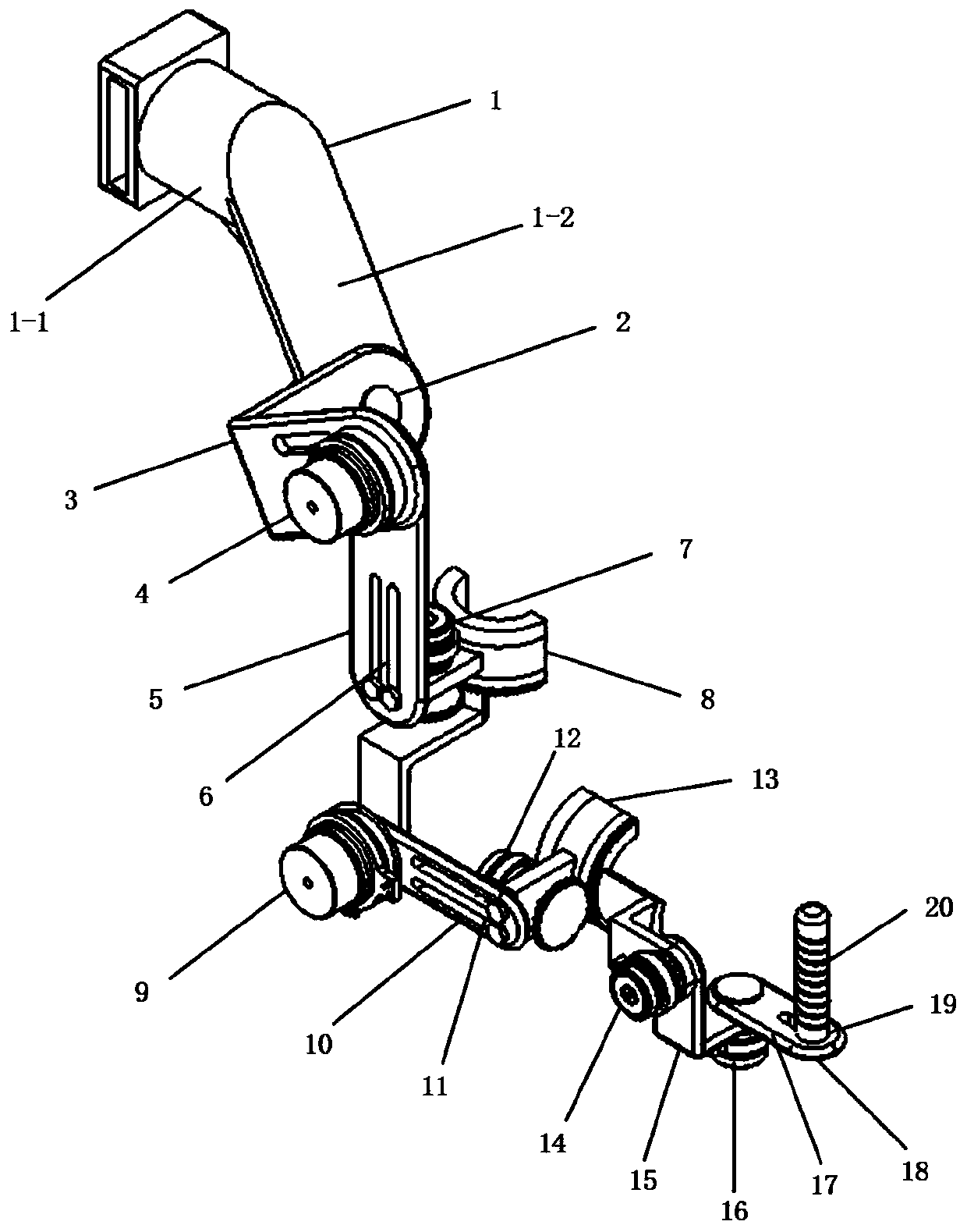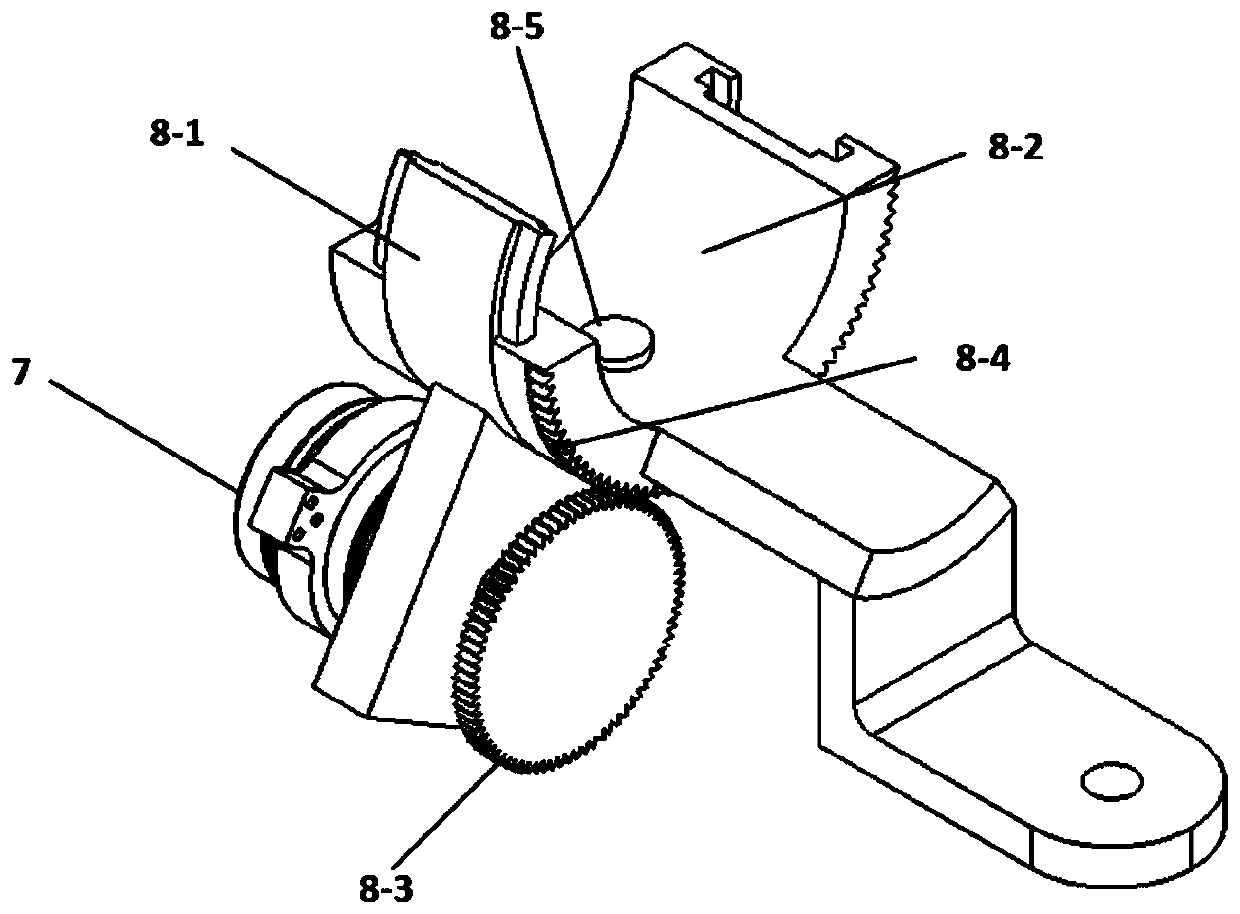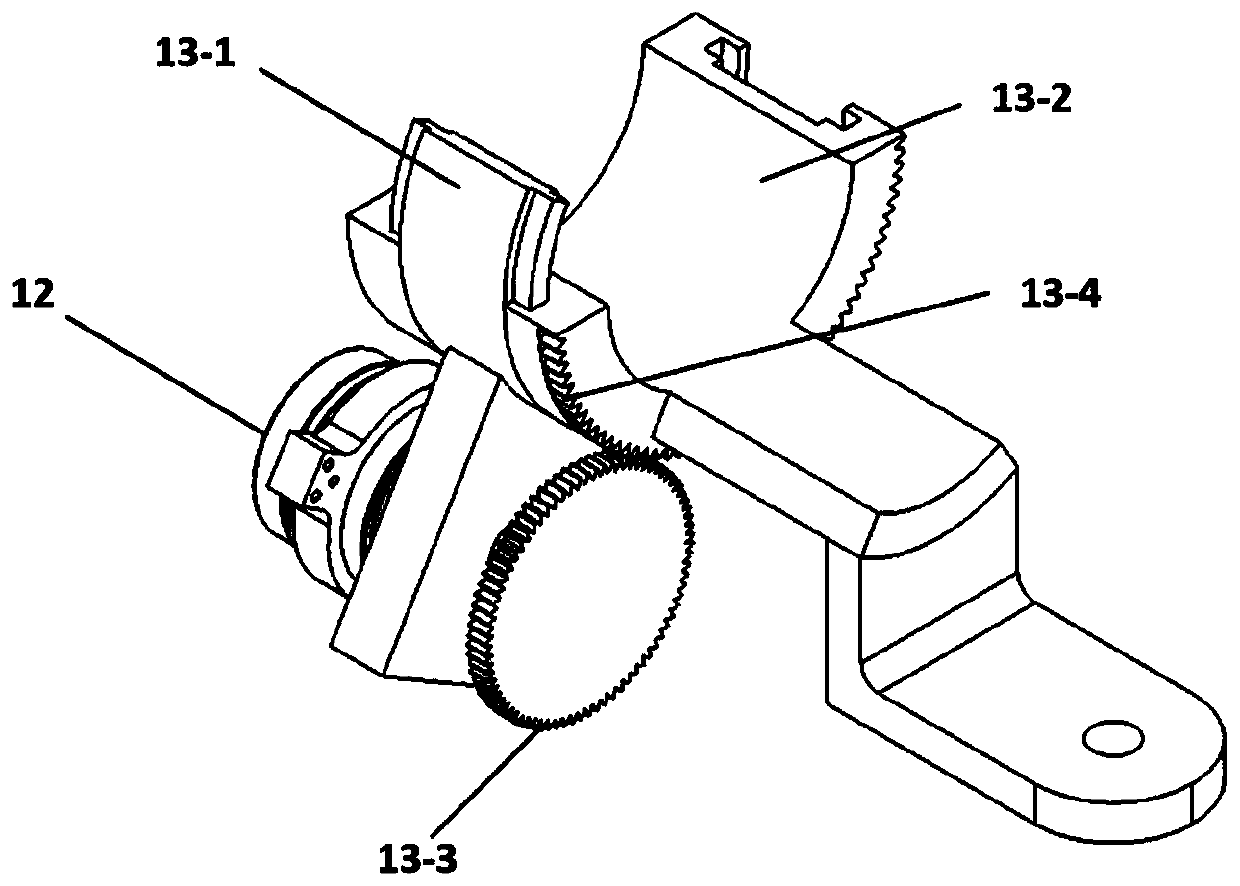Interchangeable, singularity-avoiding, seven-degree-of-freedom robot for rehabilitation of exoskeletons of upper limbs
A rehabilitation robot and exoskeleton technology, applied in passive exercise equipment, physical therapy and other directions, can solve the problems of inconvenient movement of the overall mechanism, mismatched degrees of freedom, and inconvenient wearing.
- Summary
- Abstract
- Description
- Claims
- Application Information
AI Technical Summary
Problems solved by technology
Method used
Image
Examples
Embodiment Construction
[0020] The present invention will be further introduced below in conjunction with the accompanying drawings and specific embodiments.
[0021] combine Figure 1-3 , an interchangeable and singularity-avoiding seven-degree-of-freedom upper limb exoskeleton rehabilitation robot of the present invention, including a shoulder joint base 1, a first driving mechanism 2, a shoulder joint connecting rod 3, a second driving mechanism 4, a large arm connecting rod Rod 5, the third drive mechanism 7, the first semicircular guide rail 8, the fourth drive mechanism 9, the forearm link 10, the fifth drive mechanism 12, the second semicircular guide rail 13, the sixth drive mechanism 14, the wrist Joint connecting rod 15, seventh driving mechanism 16, hand connecting rod 17, grip 20;
[0022] The shoulder joint base 1 includes a connected horizontal bar 1-1 and an oblique bar 1-2; an included angle is provided between the oblique bar 1-2 and the horizontal bar 1-1, and the oblique bar 1-2 i...
PUM
 Login to View More
Login to View More Abstract
Description
Claims
Application Information
 Login to View More
Login to View More - R&D
- Intellectual Property
- Life Sciences
- Materials
- Tech Scout
- Unparalleled Data Quality
- Higher Quality Content
- 60% Fewer Hallucinations
Browse by: Latest US Patents, China's latest patents, Technical Efficacy Thesaurus, Application Domain, Technology Topic, Popular Technical Reports.
© 2025 PatSnap. All rights reserved.Legal|Privacy policy|Modern Slavery Act Transparency Statement|Sitemap|About US| Contact US: help@patsnap.com



